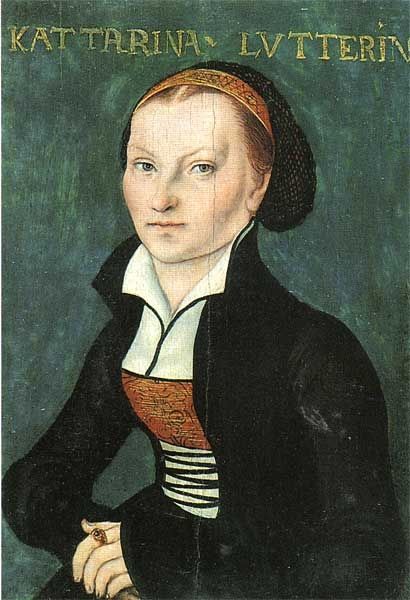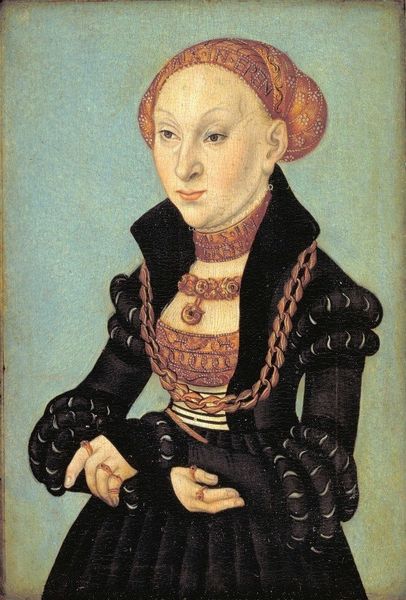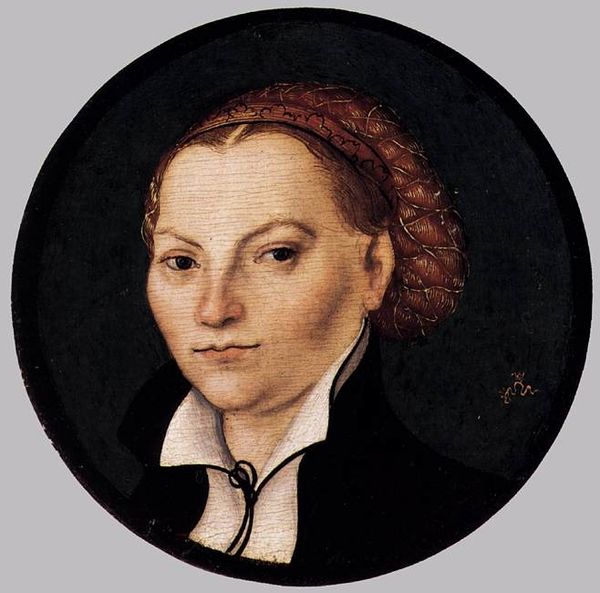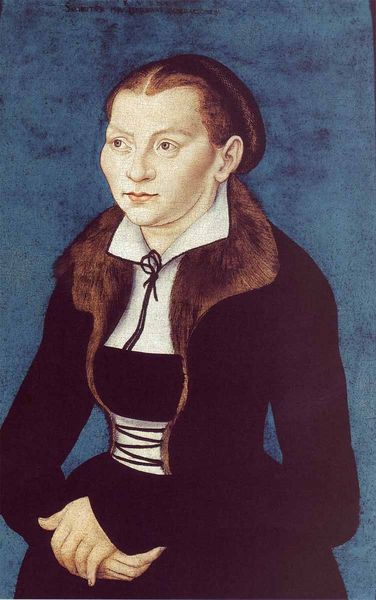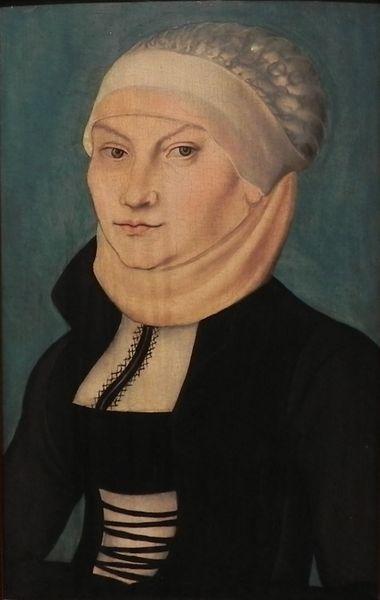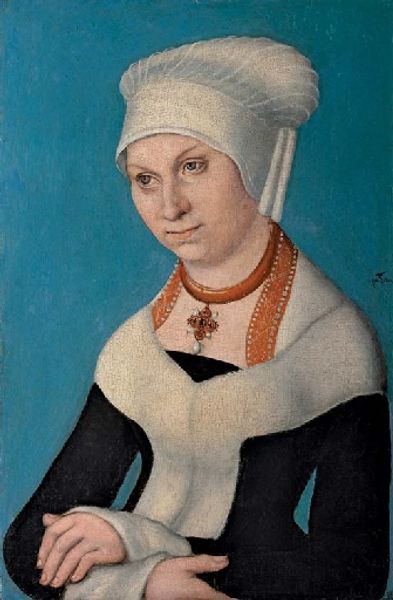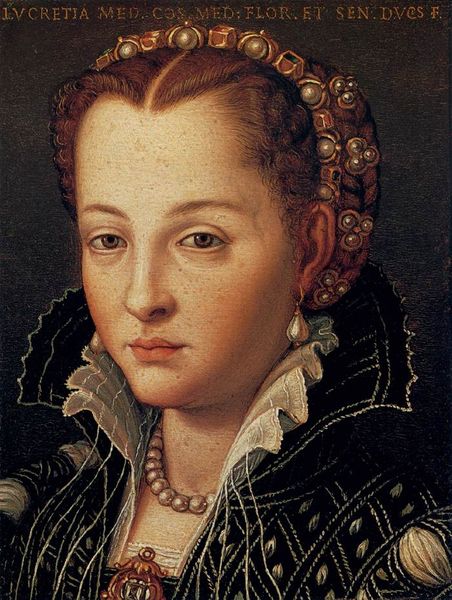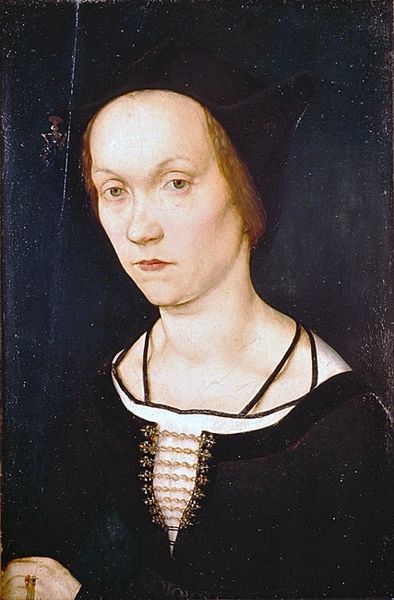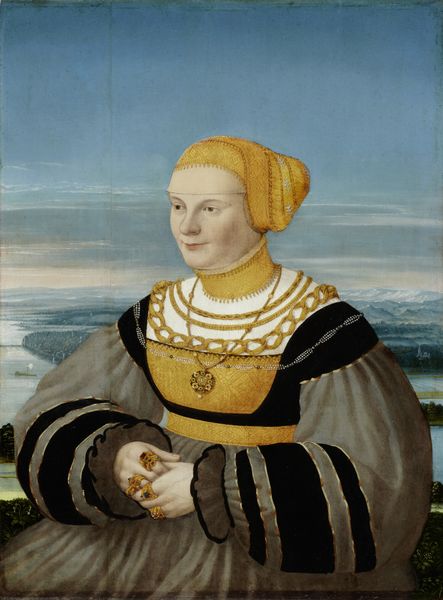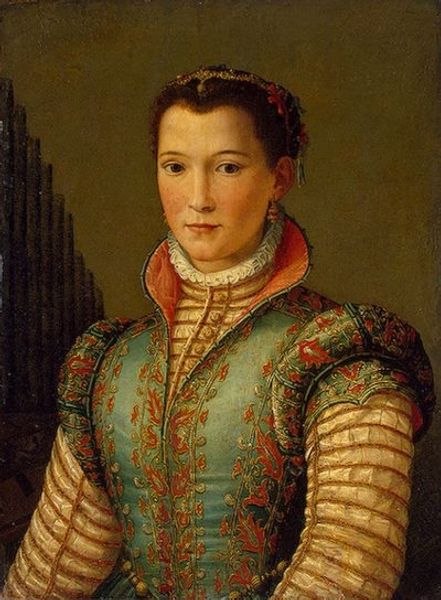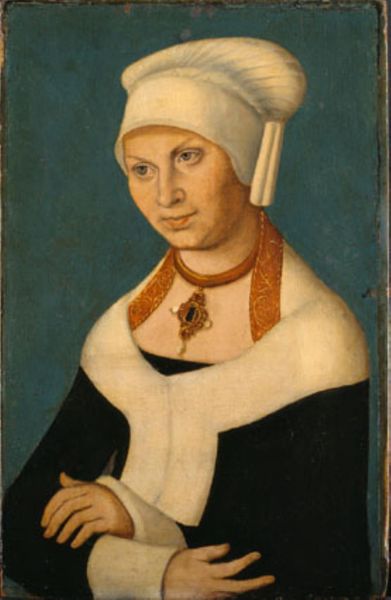
painting, oil-paint
#
portrait
#
painting
#
oil-paint
#
history-painting
#
northern-renaissance
Copyright: Public domain
Curator: Looking at this arresting portrait, one can hardly guess the role this woman would play in shaping religious and social history. This oil painting is Lucas Cranach the Elder’s “Katharina von Bora, future wife of Martin Luther,” created in 1526. Editor: The flat green backdrop almost throws her forward, doesn't it? Very immediate. The almost severe clothing contrasts with the ornate gold work on her bodice and headband... I'm immediately curious about these sartorial contradictions. Curator: Her clothing certainly speaks to the era. Cranach was a master of capturing not just likeness but status, portraying prominent figures of the Reformation. He presents her almost like a model of Lutheran austerity, but her rings speak volumes of the emergent rising middle class. Editor: Right, we have an instance of material signifiers conflicting with Reformation ideals. Someone had the resources and time to have all of this meticulously captured, down to the detail on her fingers. Look at those stripes, each had to be painted! Curator: And consider that within a year of this painting, Katharina and Martin would marry, scandalizing many. She went from being a nun to managing the Luther household, a former monastery, into a home, a working farm, a place of refuge. In this sense, this is a portrait of possibility and societal change. She, the individual, is emblematic of vast ideological change. Editor: Exactly! So much industry and transformation contained in that small painted image. And I agree - the setting of this portrait hints at future developments in manufacturing, distribution, labor, all set against the background of immense change within a household and a rising class! I wonder, for instance, if she wears German-made gold work in this picture! Curator: The artist leaves the symbolic code almost for us to unravel it. Even though it is ostensibly her, it is equally a time capsule of emergent values. Editor: It just shows how "simple" portraits can reveal how objects can participate in world-historical transformations!
Comments
No comments
Be the first to comment and join the conversation on the ultimate creative platform.

